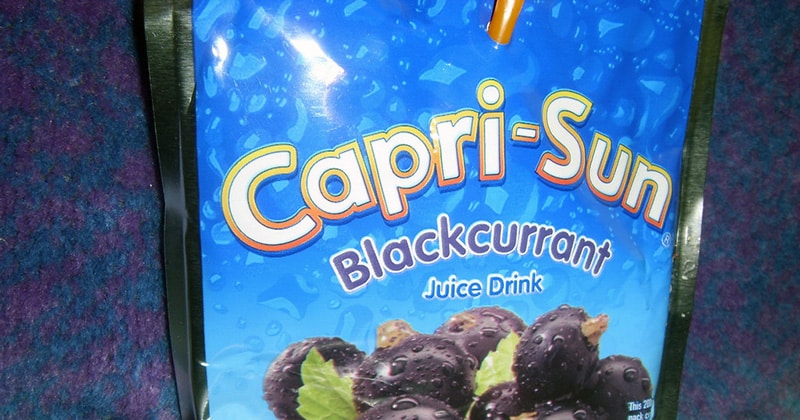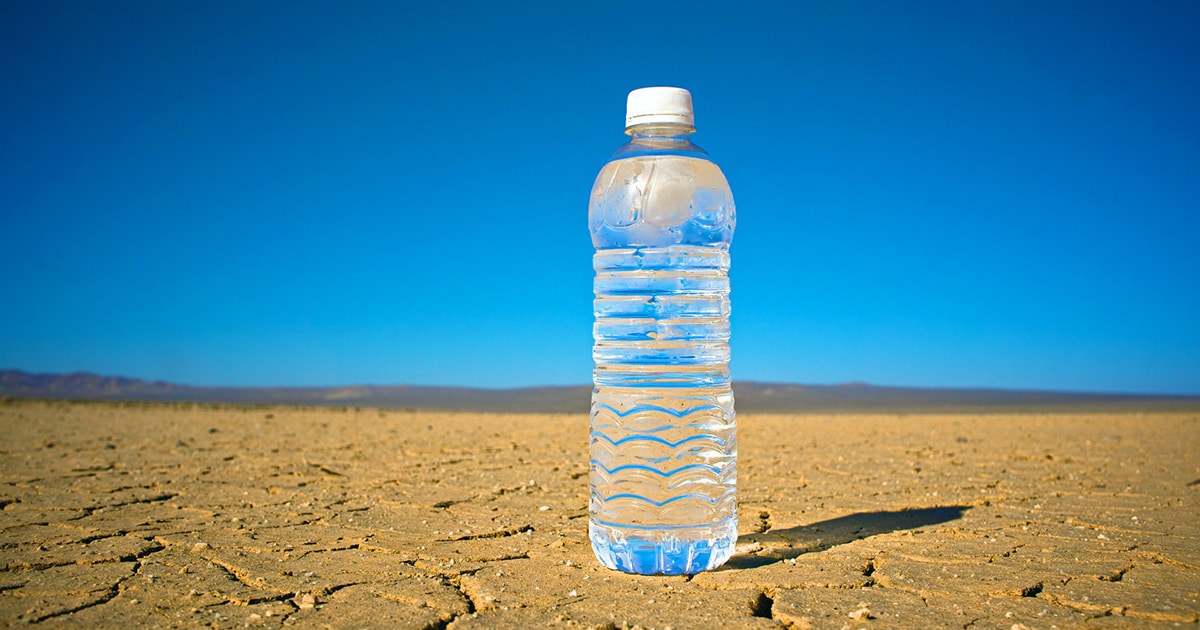When I was a kid, Kool-Aid, Tang, and Hi-C juice boxes were the norm for kids’ beverages. You were super cool if you had Capri-Sun, water was boring, and tea was for grown-ups.
Clearly, things have changed.
Nowadays teenagers proudly tote tea-based beverages. Bottled water is a blank canvas for those trendy flavored squirtables and stick-packs. Coconut water, maple water, and now even cactus water continue to gain popularity. Classic sports beverages like Gatorade are continuously evolving to stay relevant.
This is all very amusing and confusing for parents, who want to keep their children hydrated and healthy but who clearly had far fewer options and health-based marketing messages to deal with as kids themselves.
How to Balance Health, Hydration and Taste

The bottom line for parents is that kids often want something that tastes good (and if possible, makes them super cool like Capri-Sun did for us as kids). They’re likely far less influenced by healthy trends or sports nutrition, and much more influenced by the example that you set for them.
You may urge them to drink water, the #1 go-to and mainstay, but it doesn’t always work. So how do you strike a balance between health, hydration, and taste?
To answer this question, we have to target our focus to three specific scenarios with three different kids: the sick kid, the sports kid, and the everyday kid. Each situation comes with its own challenges, which I’ll address below.
Scenario #1: When Your Kid is Sick
When your kid is exploding from both ends, they’re losing vital nutrients, electrolytes and, of course, water. It’s crucial to remember that kids lose different proportions of nutrients through vomit and diarrhea than they do through sweat.
Hydration drinks like Pedialyte and sports beverages like Gatorade or Powerade are both popular options for re-hydration during gastrointestinal distress, and especially Gatorade because the flavors vary and the viscosity seems more palatable (to the adult palate).
But in the case of a system blow-out, Pedialyte is the better option for your kids. It is specifically designed to replace the nutrients lost through vomiting and diarrhea. The nutrient levels in Pedialyte also meet the requirements of the American Academy of Pediatrics for rehydration in infants and children.
To illustrate why that is: One study found that Gatorade worked as well as Pedialyte for mild dehydration, but that the Gatorade group had a lingering potassium deficiency after treatment. That’s critical to avoid in dehydrated children, as low potassium can be life-threatening depending on its severity. At the minimum, it can lead to weakness, fatigue, muscle cramps, and constipation. More worrisome is when it causes abnormal heart rhythms. So staying on top of a proper electrolyte balance is very, very important.
Breaking down the nutrient components for a closer look: one serving of Gatorade’s G2 Fierce Grape has 7 grams of sugar from sugar and dextrose, with 160 mg sodium and 45 mg potassium. It’s Pedialtye cousin in the Strawberry flavor has 6 grams of dextrose, with 240 mg sodium, 180 mg potassium and 10% of the RDA of zinc. While the sodium levels are comparable, Pedialyte has at least twice the potassium, and Gatorade doesn’t have zinc at all.
One Gatorade study did confirm what thousands of moms, dads, and hungover college students already know, though – sick kids much prefer the taste of Gatorade to Pedialyte. That’s likely biased but I can’t argue with it, because I’ve had both…and…yuck.
Still, if you can’t get your kid to drink Pedialyte it may be tempting to give them a sports beverage or fruit juice instead – but I’d urge you to reconsider. The sugars in these drinks draw water into the intestine, which makes diarrhea worse. The frozen pops might be a better bet – since the “slimy” factor is less noticeable
And as always – your child’s physician should be consulted if they are ill. Hydration needs vary depending on the severity of the illness and your child’s age/height/weight, so it is imperative that you contact their doctor in the process of trying to keep them well-hydrated.
Scenario #2: When Your Kid Plays Sports
If your kid is doing light activity for less than one hour or moderate activity for less than thirty minutes, the AAP guidelines are clear – water is just fine. However, if your kid is doing moderately strenuous activity for at least one hour, or high intensity activity for thirty minutes, a sport beverage may be the better option.
There are three major benefits to sports beverages:
- They taste good, which means your kid is more likely to drink them then water, and therefore less likely to become dehydrated.
- They contain the electrolytes needed to replace those lost through sweat.
- A sports beverage can provide the body with instant fuel when sipped during activity.
These three benefits only hold true when the sports beverage is sipped during physical activity, and if the activity is strenuous enough (an idea of what that means can be found here). In other words, if your toddler is wandering the soccer field for a total of twenty minutes, water will most likely suffice.
Is coconut water a good option?
Some ask, well, what about coconut water? Before swapping regular water or a sports beverage with coconut water, it’s important to read labels. Some brands of coconut water have added sugar – more so than an average sports beverage. Other brands have very low sodium, which needs to be replaced after strenuous or prolonged exercise.
It’s also important to consider that the high potassium content in coconut water is a real taste barrier to some people. What’s the point in getting a “healthier alternative” sports beverage that your kids won’t even drink?
Scenario #3: When You’re Packing Their Lunch
It’s an average day and you’re in charge of packing your kid’s lunch in the mornings. Water is obviously the best option here. But if they need a little incentive, what can you give them to ensure and entice them to stay hydrated throughout the day?
Water add-ins like Mio and Crystal Lite can make drinking water more appealing, plus these yummy mix-ins can be lower-calorie, lower-sugar options than fruit juice.
A word of warning, though. Make sure these options are caffeine-free and remember that “No Sugar Added” does NOT mean low-sugar! Also, for younger kids, you’ll want to prepare these water mixes ahead of time so you don’t risk your kid consuming the Mio or Crystal Lite packet straight, sans water.
For older kids and teens, green tea may seem like a great option given all the health benefits associated with consuming green tea. Remember that kids under 18 can have up to 100 mg caffeine per day, so green tea is a much better option than a soda or Red Bull.
The watch out with tea-based beverages is that some high-sugar teas may seem healthier than they actually are because of tea’s healthy image. Make sure to double-check labels for sugar content and to make sure that tea (preferably green) is one of the most prominent ingredients.
The other watch out here is that it’s important to talk to your kid about limiting caffeine intake. TRUST ME when I say this conversation is as important as the one about the birds and bees, as caffeine intake awareness may save their life one day!
Red Bull and V8 V-fusion + Energy both have 80 mg caffeine per 8 ounce can, but the caffeine from the V8 comes from green tea. That means the V8 is a better option, but too much caffeine is still too much caffeine, no matter where it comes from — even if it’s green tea!
The Bottom Line
The effects of dehydration can be as minor as tiredness and fewer wet diapers or as severe as extreme infant fussiness, fever, and low blood pressure. It can also be difficult to gauge dehydration in younger children since their ability to communicate or understand thirst is limited. So speaking to their physician about warning signs and symptoms is key to learning how to gauge dehydration in your own child.
When it comes to hydration beverages, no one solution is perfect for every kid in every situation. Understanding what your kid likes, combined with your kid actually needs is important to their sustaining their overall health in this arena. Healthy hydration options only work if your kids actually drink them.

